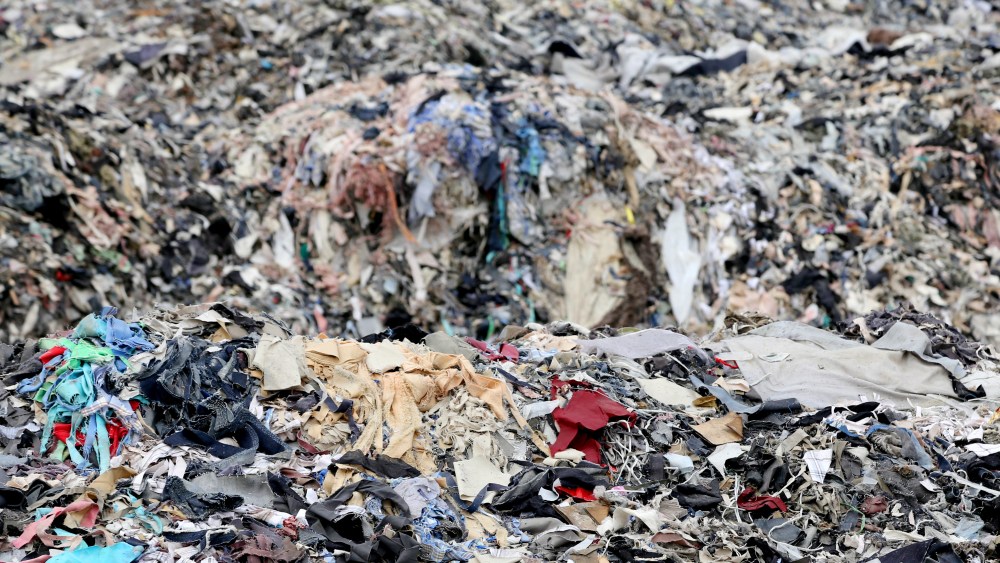In honor of International Day of Zero Waste, United Nations Secretary General António Guterres urged the textiles and fashion industry to reduce its impact on the environment.
Speaking before the U.N.’s general assembly on March 27, he said, “The waste crisis is an issue that goes to the heart of how we produce, and how we consume. And one that requires action at every level — local, national and global. Unless we accelerate action, dressing to kill could kill the planet.”
Referencing the “thousands of chemicals” — many of which are harmful to people and the environment — that textile production often uses, Guterres said that “devours resources like land and water — putting pressure on ecosystems and it belches out greenhouse gases — inflaming the climate crisis.”
Acknowledging how clothes are being produced at “a staggering rate,” the secretary general said that was being driven by business models that “prioritize newness, speed and disposability.” To illustrate his point, he noted how the equivalent of one garbage truck full of discarded clothing is going to landfills or is incinerated every second.
The U.N.’s advisory board for zero waste is uniting partners from the textiles sector and government to try to reduce the environmental impact. Guterres flagged how consumers’ choices, including young people in society, can make a difference. While some brands, conglomerates and consumers have wised up to needing to help curb the environmental impact that fashion has, Guterres called on businesses “to increase circularity, waste reduction and resource efficiency across their supply chains.” He said, “There is no space for greenwashing.”
Calling for accountability for corporate sustainability commitments and transparency for customers, Guterres said consumers can use their purchasing power to encourage change by reducing excessive consumption, valuing long-lasting products, swapping [instead of buying new goods] and purchasing pre-owned items. He added, “We need young people and civil society to keep using their voices and power to demand change through advocacy.”
In a First Insight report, 62 percent of Gen Z shoppers indicated they prefer to buy from sustainable brands, while 73 percent said they were willing to pay more for sustainable products. In addition, Gen Z and Millennials are the most likely to make purchasing decisions based on personal, social and environmental values.
Governments need to put into place policies, regulations, and subsidies to promote sustainability and zero-waste practices to encourage businesses to enact positive practices, Guterres said. Such efforts “provide decent jobs and empower everyone — not just the wealthy — to afford products that last,” according to the secretary general.
While fashion is just the tip of “a toxic iceberg,” he said that waste is an issue in every sector, with humanity churning out more than 2 billion tons of garbage annually. At this rate, annual waste production is expected to hit 3.8 billion tons by 2050. Guterres said that negotiations for a legally binding treaty to end plastic pollution (the U.N. Plastics Treaty) are due in August and are “a key opportunity for governments to drive progress.”
Eleven percent of plastic waste comes from clothing and textiles, and only 8 percent of textile fibers were made from recycled resources in 2023, according to the U.N.’s Environmental Program. Annually, 92 million tons of textile waste is produced globally. Production doubled between 2000 and 2015, as the duration time of garment decreased by 36 percent.
Guterres highlighted how more than 1 billion people live in slums and “informal urban settlements, where waste management is non-existent and disease runs rampant.” He also said that the “rich world is flooding the Global South with garbage, from obsolete computers to single-use plastic and more.”
In addition, many countries do not have the infrastructure to process “even a fraction of what is dumped on their shores,” causing recyclable materials to be burned or sent to landfill and “waste pickers” to be exposed to toxic chemicals as they sift through “potentially hazardous materials in appalling conditions,” Guterres said. Discarded clothing from numerous brands has been found in massive heaps in Chile’s Atacama Desert among other places.
Asked about the potential impact of Guterres’ comments Monday, Jeff Garner, director of the documentary “Let Them Be Naked,” and a book by the same name, cautioned that inevitably there will be skeptics. “It’s a relatively new idea that what we wear on our skin could go into our bloodstream and into our fatty tissues. With these chemicals, there’s a 37 percent absorption rate into the skin [based on research from Stockholm University’s Giovanna Luongo],” he said. “I’m a designer by nature [through the Prophetik company]. We don’t have protection organisms to filter anything through our skin.”
However, his hope is that Guterres’ remarks will lead to tangible changes. “When you introduce policies, and the government gets involved, that puts a stamp of ‘we-should-look-at-this’ [on the matter]. People then start giving all these studies and research that scientists have done to try to warn us. That gives it credibility, because there’s a liability issue that’s coming about. They’re starting to address it and regulate it,” Garner said.
He noted how last year he consulted with Baroness Bennett of Manor Castle, who introduced Amendment 57 in the U.K. Parliament for clothing safety that would regulate and ban toxic chemicals for school and work uniforms. Garner also singled out Sacramento’s Fashion Environmental Accountability Act [AB 405], a bill designed to reduce the fashion industry’s role in generating textile waste, natural resources pollution and exploitative labor practices. He also has been in touch with supporters of that legislation, which is being presented next month in California.



